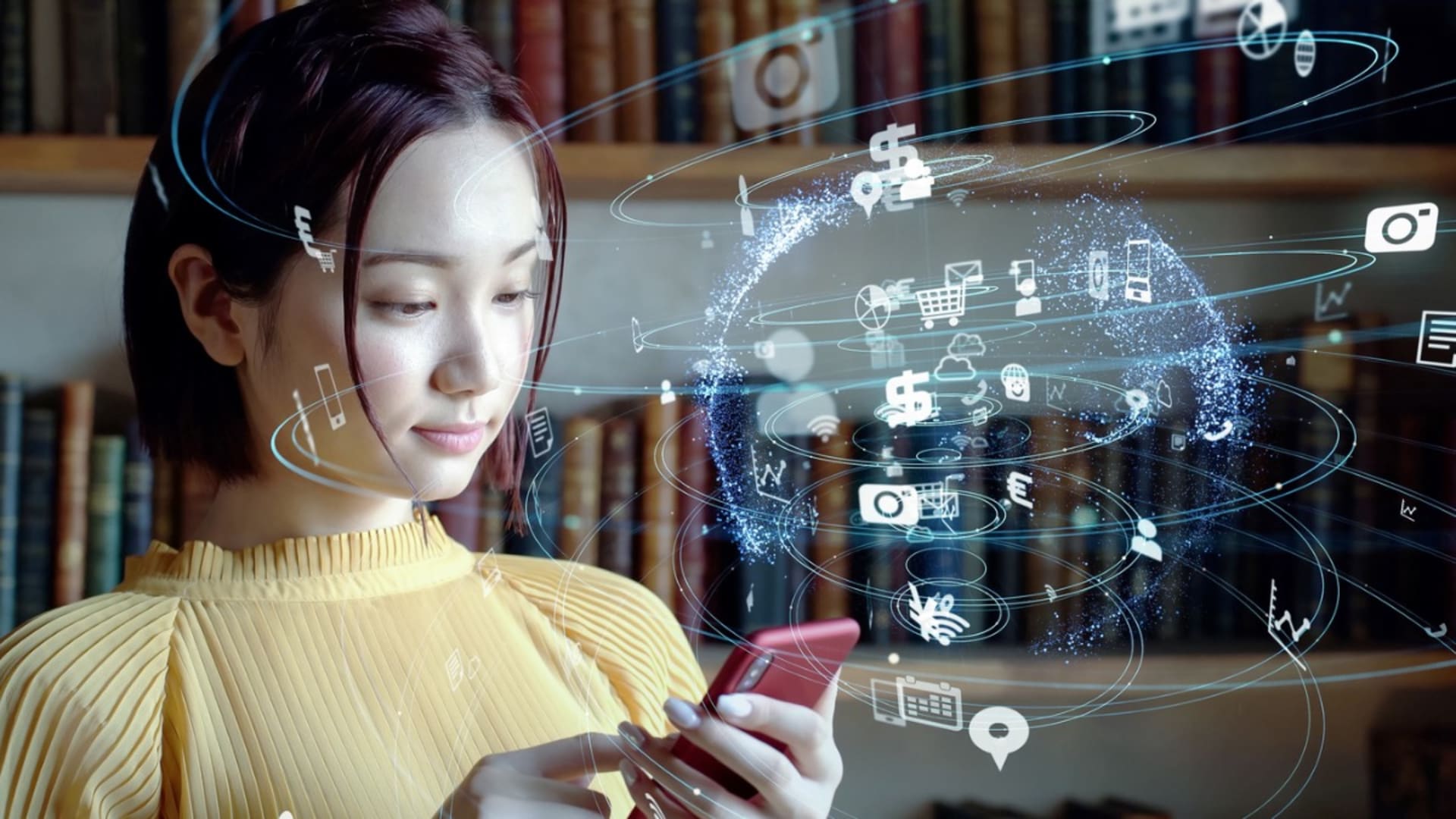Formal learning has always evolved along with the technologies of the day. For example, the advent of film enabled students to see images of things happening around the world in a more engaging way than simply reading or being told about it. Television provided a way to get news and other information through public television documentaries. The internet provided a way for students to research and learn more about the topics explored in their classes.
Technology has advanced, and students now have many more ways to learn. At the same time, instructors have innovative ways to support that learning. As a result, the flipped classroom method has grown in popularity. Rather than using class time to present information in lectures and prompting students to do follow-up activities outside of class, instructors have students review the information initially outside of class and use classroom time for more in-depth interactive activities.
According to Harvard University, some benefits of the flipped classroom model are flexibility, providing more opportunities for higher-level learning, increased collaboration between students, and the ability for students to learn at their own pace and take responsibility for their learning. The model does have potential drawbacks, but many instructors and students find that the benefits far outweigh them.
The flipped classroom model relies on technologies like e-books to present material to students initially and things like virtual reality to create engagement during class time. In the following sections, we explore these and other technologies being used in classrooms today.
1. Personalized Learning
E-learning technology provider Kitaboo states, “Personalized learning is an approach to education that tailors teaching and learning to individual students’ needs and preferences.” With solutions like e-books and analytics, teachers can easily determine students’ progress and personalize learning plans accordingly.
Adaptive learning software deploys algorithms to identify each student’s strengths and weaknesses. Instructors can use this information to employ specific content and move at a pace that will be most useful to them. This approach helps each student proceed through their own learning journey in a way that is most effective for them.
Teachers can use personalized learning apps to supplement their instruction. These apps perform automated instruction, provide feedback, and can be tailored to the needs and abilities of each student.
Learning management systems enable teachers to track student progress and performance and respond with real-time feedback and support. It is one more technology solution that supports teachers in delivering tailored learning experiences customized to the needs of each student.
2. Collaborative Learning
As in the work environment, technology makes it easier for people to collaborate. In education, it is students who are working together to ingest new information, work on a project, or solve a problem, all skills that students will need in their professional lives. Collaboration as a learning method has been shown to improve students’ understanding and increase their engagement.
However, collaboration must be balanced with other educational methods. While online classrooms in which students were forced together for long periods of time were necessary during the COVID-19 pandemic, they weren’t always successful. One reason is that the online environment is only appropriate for limited time periods. An approach where students spend time with other learning styles can be more effective.
The technology that makes collaborative learning possible includes video conferencing, to allow students to meet and collaborate with each other, even if they are not in the same geographical location. This method can be highly useful for remote learning, as mentioned above, as well as meeting with students at other institutions.
Virtual whiteboards provide students and teachers with tools similar to those found in a physical classroom. They may include a blank canvas where all participants can write their ideas, draw diagrams, and work on solving problems.
Project-based learning tools like Trello or Asana allow students to organize their projects and make their own individual contributions to them. These platforms enable students to create complex project plans, assign tasks, track progress, and communicate with each other throughout the duration of the project.
3. Interactivity
With the flipped classroom model, students are doing much of their primary learning outside the classroom with e-books and other tools. This approach leaves time in the classroom for interactive activities, including discussions and group actions. This learning method gives students the opportunity to initially absorb material on their own and follow up with activities designed to keep them engaged in the material they’ve learned.
The technology that makes it possible includes videos, audio, virtual reality (VR), and augmented reality (AR). VR and AR make learning more immersive than traditional methods. Futurist Bernard Marr writes, “Many people reading this will probably remember learning about topics like the Roman Empire by reading history books – imagine how much more information you might have absorbed if you’d been able to wander around a digital reconstruction of ancient Rome.”
VR provides the ability to take students on “virtual field trips” to see moments in history play out or visit distant planets. It can also be used to create realistic simulations of scientific experiments in a controlled environment or help students learn languages by immersing them in real-life situations such as restaurants or business meetings.
Such experiences can help bring the subject matter to life. Further, students can view enhanced versions of images on their mobile devices, giving them greater context and detail, which encourages more engagement and deeper learning.
4. Leaving the Classroom
As we have noted, part of the flipped classroom concept (the video below offers more details about this method) involves students doing more learning on their own. They are using mobile devices to learn at their own pace and in their own time. Materials such as e-books can include functionality to enhance the learning experience. Features like bookmarking and annotation tools, dictionaries, search functions, and links to additional sources make the learning process more flexible and personalized.
5. Gamification
Various uses of gamification are being implemented in classrooms, including leaderboards, reward points, badges, and stickers. These methods incentivize students to learn and participate, making it more likely that they will be engaged and involved. Students get a way to see their progress in relation to their own past learning and to their peers. The following list describes how these methods are used.
- Educational games. Teachers can use games to introduce new concepts or skills and allow students to try them out in a fun environment.
- Badges. Instructors can use badges and achievement levels to reward students for completing tasks, mastering skills, or meeting goals.
- Leaderboards. Educators can use leaderboards to foster healthy competition among students and encourage them to do their best. Leaderboards track progress, compare scores, and show students what is possible for the educational goals they are pursuing.
- Quests and missions. Teachers can use quests and missions as a structure for learning activities. For example, students might be asked to solve a mystery that is based on a scientific question, involving the need to answer questions or complete tasks.
- Role-playing games. Similar to quests and missions, instructors can create roles for students as a structure for the concepts they are teaching. For example, students might be asked to role-play historical figures when studying history or fictional characters when exploring literature.
6. Social Media
Social media has been shown to have detrimental effects on children and is known to contribute to the fake news phenomenon. However, it is a big part of the lives of many young people, so educators are finding appropriate ways to incorporate it into the learning process.
For example, social media platforms can be used as communication tools, so students can interact with each other and their instructors. They can share media, such as videos, images, and news stories with each other, and even use the social media features embedded in the e-books they use to learn or share information. Social media is also helpful for enabling students to network and start building a professional online presence.
7. Data Management and Analytics
Data management and analytics are useful for instructors because these tools enable them to keep track of student progress. This method is especially important for self-learning environments. Instructors can know how many chapters students have completed, how many homework assignments they have turned in, and the number of tests attempted for the scores achieved.
Instructors can get a microcosmic view of individual students and also a macrocosmic view of how their classes are doing as a whole. With these abilities, they can dispense with much of the tedious bookkeeping they have had to perform in the past and focus on their courses and students. Additionally, they can use this information to develop plans to improve the performance of students who may be falling behind.
8. Internet of Things
The Internet of Things (IoT) can be used to create smart classrooms and learning environments tailored to the needs of specific students. The technology includes sensors, devices, and other equipment to monitor student progress, change aspects of the learning environment, and deliver personalized content in real-time.
Smart classrooms might include interactive whiteboards, connected devices, and smart lighting to create a more flexible, welcoming, and interactive learning environment for students. Educators can also monitor environmental conditions in the classroom, such as temperature, humidity, and air quality. Optimizing these conditions can create a more comfortable and healthier learning environment.
The IoT can also be used to create personalized learning experiences by collecting data on student learning patterns, enabling teachers to modify their instruction to each student’s needs. This process might involve identifying students who are struggling with a particular concept and offering them additional support.
9. Cloud Computing
Cloud computing allows educators to store and access learning materials online, which in turn enables students to easily access them. These abilities result in greater flexibility in delivering educational resources. It also enables collaborative learning because students can work on projects and assignments as teams, even from different locations.
An added benefit of cloud computing is helping learning institutions save money they would otherwise spend on IT infrastructure and software licensing fees. The funds that previously went to expensive hardware and software can now be used for the latest cloud-based solutions to provide educational value at a much lower cost.
Further, cloud computing can simplify the process for some of the other technologies discussed here, including data management and analysis. By using cloud-based platforms to store and analyze student data, educators can quickly and easily gain insight into student performance and determine areas in which certain students may need additional support. This method can improve student outcomes.
10. 3D Printing
3D printing can be used to create physical models of objects, structures, and concepts. This ability can make it easier for students to visualize and understand the subjects they are learning about. It also enables students to create their own digital prototypes and then bring them to life in the physical world. This process can encourage creativity and enable innovation.
This technology is especially useful in areas that require problem-solving, such as science, technology, engineering, and math (STEM), and prepares students for careers in these fields. Engaging in the design process can also help prepare students for careers in areas like design, engineering, and manufacturing.
Bonus: Cybersecurity
Cybersecurity is highly important in educational environments in two main areas: student privacy and cyberbullying. Regarding student privacy, learning institutions keep personal data about students, including their names, addresses, email addresses, dates of birth, and other information that is valuable to would-be hackers. Institutions are using cybersecurity methods to ensure such data, in addition to educational progress information, is kept private.
It is important to note that no one cybersecurity method will prevent cyberattacks. Therefore, educational institutions must hire knowledgeable IT professionals to engage as many of these methods as needed to guard against the latest vulnerabilities and threats. Specific technologies and methods include the following:
- Encryption. Encryption is the process of encoding data so that it can only be accessed by authorized users. Educators and staff can use it to ensure only those who need to see student data can view it.
- Access controls. Access controls restrict access to sensitive data to only authorized individuals. Using them, educators can limit who sees this data.
- Firewalls. Firewalls are network security systems that track and control incoming and outgoing information. Educators can use them to prevent cyberattacks.
- Antivirus software. Antivirus software identifies and eliminates malware from computers and other devices. It is one more tool that can help prevent cyberattacks.
- Employee training. While not a technological solution, the human element is perhaps the most important cybersecurity strategy of all. Learning institutions are training educators and staff on recognizing and responding to cyber threats, many disguised as innocent-looking emails or other seemingly innocuous actions.
Meanwhile, cyberbullying is a serious problem among young people and one that can have dangerous consequences. So, learning institutions are taking appropriate measures, including those listed here, to prevent it.
- Filtering and blocking software. Learning institutions can use this type of software to limit students’ access to websites and online platforms commonly used for cyberbullying, including social media sites. This action can help to prevent students from accessing or engaging in cyberbullying or other harmful content.
- Monitoring software. This kind of software can monitor student activity as they use school computers and other devices. While some argue that this type of monitoring violates student privacy, it is an effective tool for helping educators identify and address cyberbullying incidents.
- Anonymous reporting systems. Educational institutions can implement systems that allow students to report cyberbullying incidents without fearing retribution. Such systems can foster a safe and supportive environment for all students.
- Digital citizenship education. As with employee training, digital citizenship education is not a technological solution per se. But it is needed to help humans – in this case, students – understand how to best work with technology. This training is designed to help students understand the impact of their online behavior on others and encourage them to behave responsibly online.
Does Better Technology Mean Better Instruction?
As with many areas that are incorporating new technology, technology itself does not necessarily make the teaching or learning experience better. Good instruction is based on the skills and knowledge of educators who establish welcoming and effective learning environments that meet the needs of all their students. It also involves specific objectives, careful lesson planning, valuable assessments, and ongoing support for students, especially those who may struggle.
Those in education must understand that technology’s effectiveness will result from their effective use of it. Technology must be seen in this context as a tool that can support and enhance instruction, but it must be teachers and instructors who guide its use.






